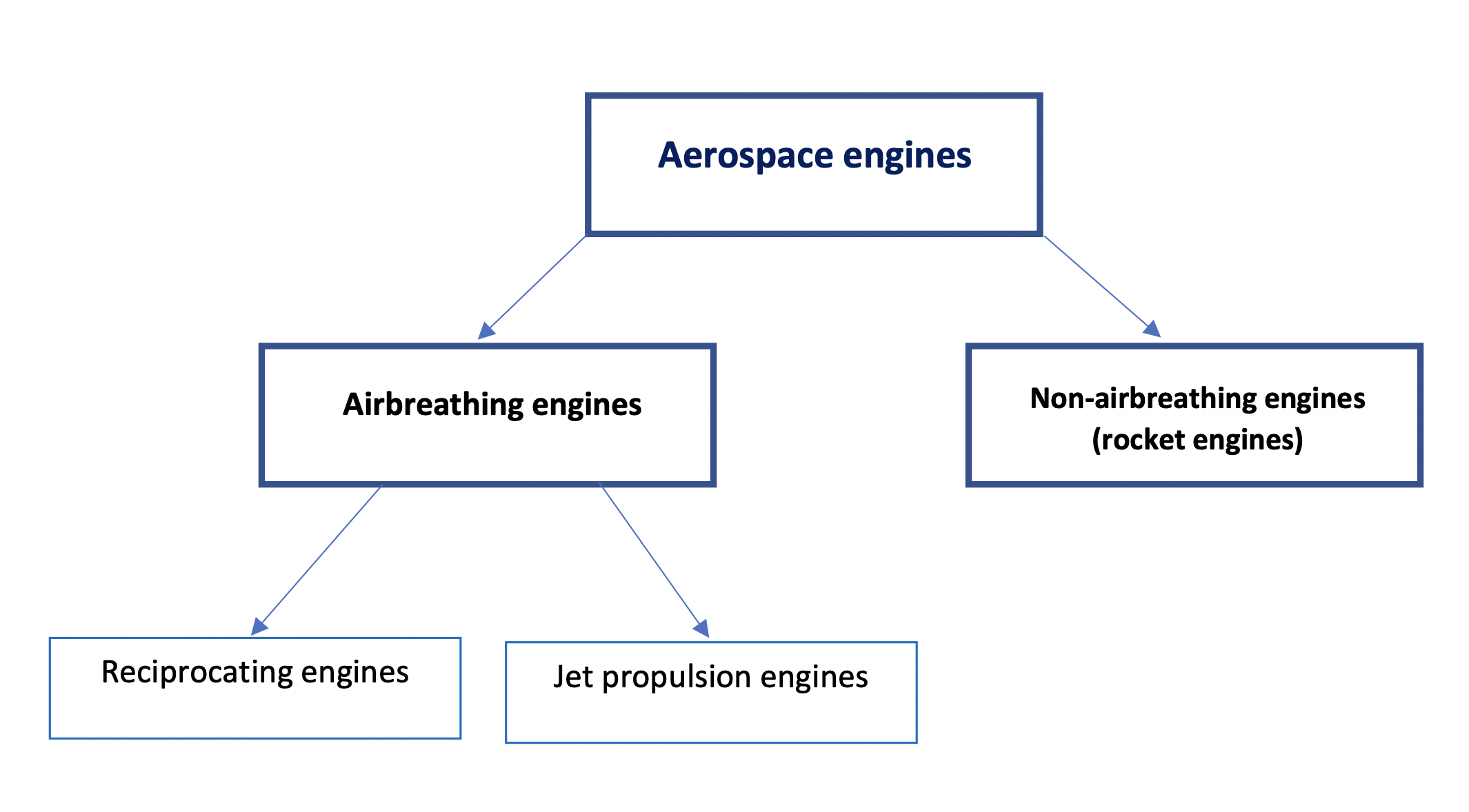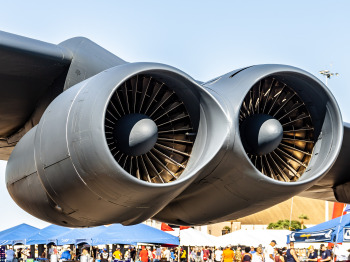Airbreathing and non-airbreathing engines make up the two main categories of aerospace engines. For simplicity, Airbreathing engines (also known as airbreathers) function by utilizing the air that the aircraft is flying through, both as an oxidizer for the fuel in the combustion chamber and as a working fluid for thrust generation. Non-airbreathing engines are rocket engines in which the propellant gas is produced aboard the vehicle. A rocket engine is a type of jet propulsion system that generates thrust by ejecting stored substances known as a propellant.
Airbreathing engines are divided into 2 types: reciprocating engines and jet engines. The Wright brothers' first successful flight was propelled by a piston engine. Up until jet engines took over, it remained the predominant source of propulsion for aircraft. Piston engines with water-cooled engines were utilized from 1903 to 1908. Excess drag and weight created by liquid-cooled engines hampered airplane performance at the time. In 1908, liquid-cooled engines had been replaced by air-cooled ones, resulting in weight reductions of up 40%. However, the performance of these air-cooled engines fell short of expectations. To increase the efficiency of air-cooled aircraft, The National Advisory Committee for Aeronautics (NACA) created a cowling that encased the engine. This engine enclosure restricted the passage of air over the engine cylinders to air in contact with the cooling fins of the cylinders.

However, piston engines were much too heavy to compete with jet engines in terms of power output. The capacity to fly at greater altitudes and at faster speeds with simpler control is one of the most evident benefits of jet engines versus reciprocating engines. The increased airflow makes cooling less difficult. On the other hand, the continuous ignition system of the reciprocating engines is not required, spark plugs are only utilized for the startup. There is no need for a carburetor or a mixture control.
The first jet engines appeared in the 1940s, and during the next 60 years, they underwent enormous progress that has continued to this day. Whether they are turbojets, turbofans, or turboprops, the engines utilized in some aircraft applications are all collectively referred to as "jet engines."
Comments (0)
Add Your Comment
SHARE
TAGS
INFORMATIONAL Aerospace EnginesAviationClassificationRECENTLY PUBLISHED
 Learjet Owned By Vince Neil Crashes Into Gulfstream Jet, 1 Fatality Confirmed
On February 10th, around 14:30 local time, a Learjet private jet aircraft crashed into another private jet after landing at Scottsdale Airport (SCF) in Arizona.
NEWS
READ MORE »
Learjet Owned By Vince Neil Crashes Into Gulfstream Jet, 1 Fatality Confirmed
On February 10th, around 14:30 local time, a Learjet private jet aircraft crashed into another private jet after landing at Scottsdale Airport (SCF) in Arizona.
NEWS
READ MORE »
 Seattle Plane Strike 2025: Japan Airlines and Delta Collision Raises Safety Concerns
Seattle-Tacoma International Airport saw a concerning incident on Wednesday morning when a Japan Airlines (JAL) plane clipped a parked Delta Air Lines jet while taxiing. Thankfully, no one was injured, but passengers described the collision as a frightening experience.
NEWS
READ MORE »
Seattle Plane Strike 2025: Japan Airlines and Delta Collision Raises Safety Concerns
Seattle-Tacoma International Airport saw a concerning incident on Wednesday morning when a Japan Airlines (JAL) plane clipped a parked Delta Air Lines jet while taxiing. Thankfully, no one was injured, but passengers described the collision as a frightening experience.
NEWS
READ MORE »
 Ethiopian Airlines Expands Cargo Fleet with New Boeing 777 Freighter
Ethiopian Airlines has expanded its cargo fleet with a brand-new Boeing 777 Freighter, registered as ET-BAB (MSN 68140). The aircraft was delivered directly from Boeing’s factory in Everett, Washington, USA, and landed at Addis Ababa Bole International Airport at 3:41 PM (GMT+3) on Wednesday, January 22, 2025.
NEWS
READ MORE »
Ethiopian Airlines Expands Cargo Fleet with New Boeing 777 Freighter
Ethiopian Airlines has expanded its cargo fleet with a brand-new Boeing 777 Freighter, registered as ET-BAB (MSN 68140). The aircraft was delivered directly from Boeing’s factory in Everett, Washington, USA, and landed at Addis Ababa Bole International Airport at 3:41 PM (GMT+3) on Wednesday, January 22, 2025.
NEWS
READ MORE »





